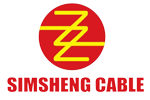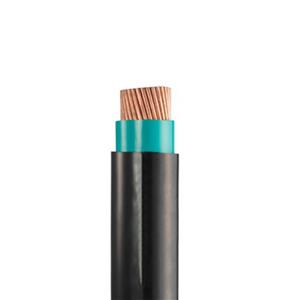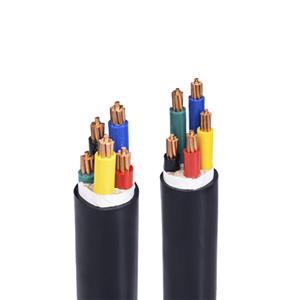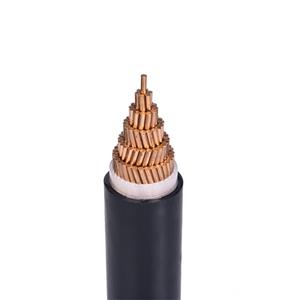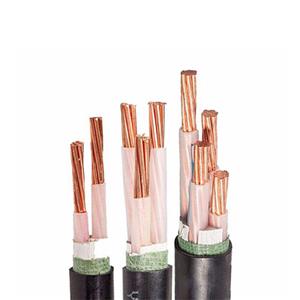Introduction to photovoltaic cables
Photovoltaic cable, full name solar photovoltaic cable, is the cable used for power transmission on the DC side circuit in the solar photovoltaic power station system. It plays the role of "blood vessels" in the entire photovoltaic power generation system, responsible for transmitting the DC power generated by photovoltaic modules to the inverter, and is an indispensable part of photovoltaic power generation.
Common models of photovoltaic cables include PV1-F, H1Z2Z2-K, etc. Among them, PV1-F is a more common model and is widely used in various photovoltaic projects. Structurally, it is generally composed of three parts: conductor, insulation layer and sheath. The conductor usually uses pure copper or tinned copper core to ensure good conductivity. The insulation layer and sheath are mostly made of low-smoke halogen-free flame-retardant irradiated cross-linked polyolefin material, which has excellent weather resistance, high and low temperature resistance and flame retardancy, and can effectively resist the erosion of natural factors such as ultraviolet rays, ozone, moisture and extreme temperatures, ensuring that the photovoltaic cable can work stably in harsh outdoor environments.
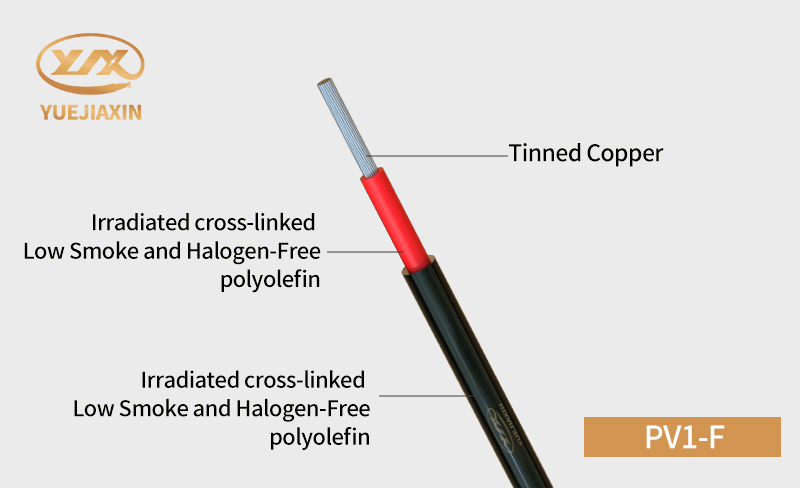
Photovoltaic cables have excellent high and low temperature resistance and can generally work normally in ambient temperatures between -40℃ and 120℃. In cold northern regions, winter temperatures are often below -30℃. Ordinary cables may become hard, brittle, or even crack in such low temperature environments, resulting in a decrease in the insulation performance of the cables and affecting power transmission. Photovoltaic cables, with their special material formula and manufacturing process, can maintain good flexibility and mechanical properties at low temperatures to ensure stable power transmission. In hot desert areas, the surface temperature may reach over 80℃ in summer. Photovoltaic cables can also withstand high temperature tests and will not deteriorate due to excessive temperatures, ensuring the normal operation of photovoltaic power generation systems. Anti-ultraviolet rays are also a major feature of photovoltaic cables. Since photovoltaic cables are usually exposed to sunlight, long-term ultraviolet radiation will cause the insulation layer of ordinary cables to age and crack, shortening the service life of the cables. Special ultraviolet absorbers and stabilizers are added to the insulation layer and sheath of photovoltaic cables, which can effectively resist ultraviolet erosion and delay the aging process of cables. Waterproof performance is also critical for photovoltaic cables. In outdoor environments, photovoltaic cables will inevitably be attacked by rain, dew, etc. If the cable has poor waterproof performance, moisture will penetrate into the cable, causing problems such as conductor corrosion and short circuit. Photovoltaic cables use waterproof structural design and materials with excellent waterproof performance, such as cross-linked polyethylene (XLPE), which can effectively prevent moisture from invading. Even in heavy rain or high humidity, photovoltaic cables can work normally to ensure the safe and stable operation of photovoltaic power generation systems. Safety performance is an important consideration for photovoltaic cables. First of all, photovoltaic cables have good electromagnetic compatibility, which can effectively reduce the impact of electromagnetic interference on surrounding electronic equipment, and at the same time resist external electromagnetic interference to ensure the stability of their own transmission signals. In photovoltaic power generation systems, devices such as inverters will generate strong electromagnetic interference. If the electromagnetic compatibility of cables is poor, nearby communication equipment and control systems may not work properly. Photovoltaic cables can effectively suppress the spread of electromagnetic interference by optimizing structural design and using special shielding materials, ensuring the harmonious coexistence of photovoltaic power generation systems and surrounding equipment.
In terms of performance requirements, photovoltaic cables are also significantly different from ordinary wires. Since photovoltaic cables are exposed to the outdoors for a long time and need to withstand high-intensity ultraviolet radiation, their ultraviolet resistance is extremely high. Relevant standards stipulate that photovoltaic wires must pass strict UV aging tests to ensure that their insulation properties, mechanical properties, etc. will not deteriorate significantly under long-term UV exposure. Ordinary wires are usually used indoors or in protected environments, and the requirements for UV resistance are relatively low.
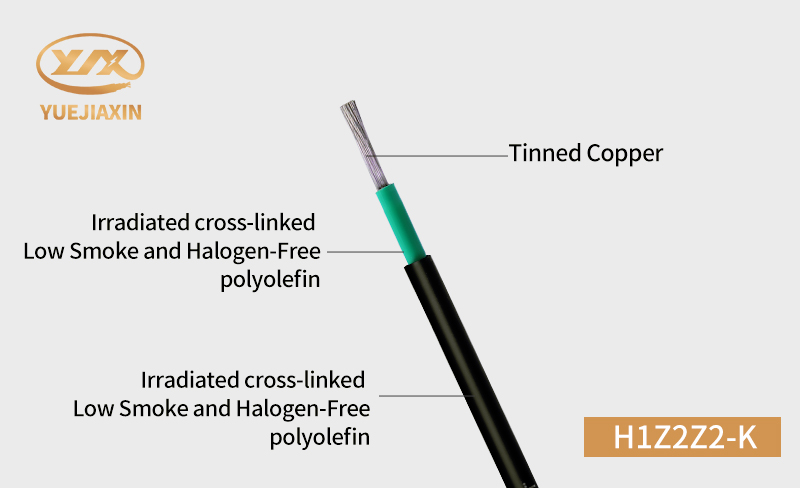
The application scenarios of photovoltaic cables are extremely wide, covering multiple fields, and provide reliable power transmission guarantee for photovoltaic power generation systems in different scenarios. As the global demand for clean energy continues to grow, the photovoltaic industry has ushered in unprecedented development opportunities. As its key supporting product, photovoltaic cables have also shown a series of eye-catching future development trends. Photovoltaic cables, a component that silently plays a key role in the solar energy industry, are gradually entering our field of vision with its excellent performance, wide application scenarios and bright development prospects, and have become an indispensable existence in the energy field. Efficient transmission of electrical energy ensures stable operation of the system; it has excellent performance, high and low temperature resistance, UV protection, waterproof and other characteristics, making it reliable in harsh environments; it is economical and environmentally friendly, with low long-term use costs, and in line with the concept of sustainable development; it is safe and reliable, with good electromagnetic compatibility and insulation stability, to protect the safety of personnel and equipment.
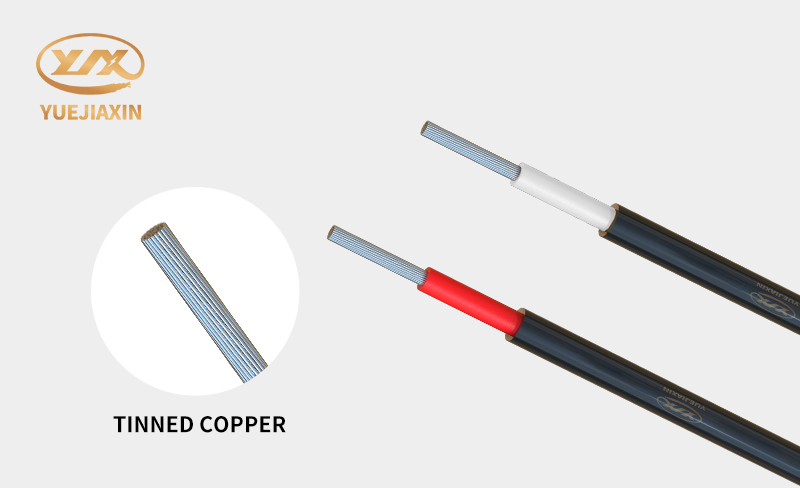
Under the background of actively promoting the development of clean energy around the world, the solar energy industry, as an important part of clean energy, is ushering in a golden period of vigorous development. As a key supporting product of the solar energy industry, the importance of photovoltaic wires is self-evident. With the continuous innovation of technology, the increasing standardization of the market and the continuous expansion of application scenarios, photovoltaic wires will play a more important role in the future energy arena.
